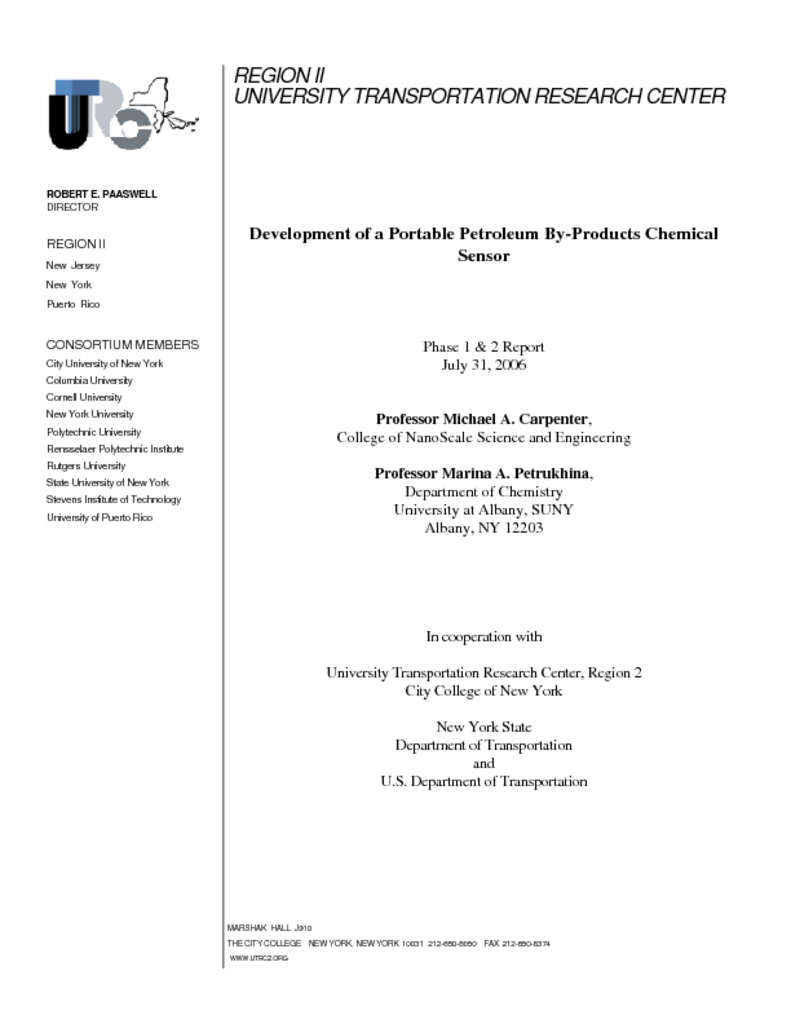This Phase 1 and 2 report documents the development of nanoparticle based chemical sensors for the sensitive, selective and field portable analyses of soil samples for petroleum spill indicating hydrocarbons (such as benzene, toluene, ethyl-benzenes, xylenes, PCBs, trichloroethylene). The broader impacts of the hydrocarbon sensor research program lies in the future target applications of nanoparticle based chemical sensors. NYS-DOT spends approximately $10-12M/yr on the testing of soil and groundwater samples, which do not include the NYC-DOT.1 By moving the majority of these tests from an off-site analytical lab, to a field portable device the overall cost of construction budgets, will be significantly lower and construction projects will experience fewer delays due to untimely analytical lab reports. Another example leading to a broader impact of the program is for monitoring benzene, toluene, ethyl benzene, and xylenes (BTEX) for applications in groundwater well networks or soil sample analysis. BTEX compounds are indicative of petroleum by-product contamination and currently the US-EPA has regulations for performing a standardized test of groundwater and soil samples using modern analytical laboratory equipment. Off-site analytical lab testing of both groundwater and soil samples are a significant expense of environmental monitoring and cleanup operations throughout the federal and state level Superfund program. Since its inception in 1986, the New York State Superfund program alone has identified, characterized and placed a total of 1,714 sites on the Registry of inactive hazardous waste disposal sites.




